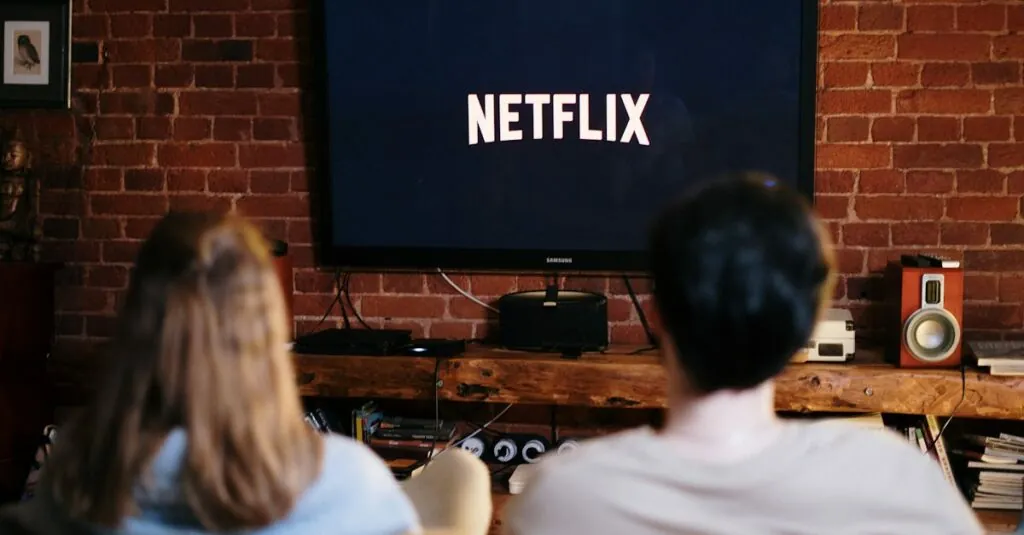YouTube TV has become a go-to for many cord-cutters, offering a buffet of channels that keeps viewers glued to their screens. But just when you’re about to settle in for a binge-watching marathon, a pesky streaming limit can throw a wrench in your plans. Imagine finally getting to that must-see show, only to be greeted by a message that feels like a digital slap on the wrist.
Table of Contents
ToggleOverview of YouTube TV
YouTube TV offers subscribers an extensive selection of channels, catering to various viewing preferences. Its user-friendly interface simplifies navigation, making it easy for viewers to find their favorite shows and live events. Streaming on multiple devices, like smartphones, tablets, and computers, allows for flexibility in viewing.
Subscribers enjoy access to over 85 channels, including popular networks such as ABC, CBS, NBC, and ESPN. Premium add-ons enhance the experience, providing options for more specialized content like HBO and Showtime. Cloud DVR features enable users to record live shows, ensuring they don’t miss any favorites.
Despite its advantages, YouTube TV has introduced streaming limits that challenge users. At any given time, only three devices can stream simultaneously. This limitation frustrates families or groups who may want to watch different programming at once. Subscribers must manage devices carefully to avoid interruptions while streaming.
In addition to these restrictions, YouTube TV’s availability depends on location. Certain channels may differ by region, which can influence the overall experience. Therefore, potential subscribers should check local offerings to understand what they can access.
Pricing remains competitive, typically around $72.99 per month. Although some may find it costly compared to traditional cable packages, the wide variety of content and features can justify the investment. Subscribers appreciate the lack of contracts, providing them the freedom to cancel anytime.
Understanding Streaming Limits
YouTube TV enforces specific streaming limits that can affect the viewing experience. Understanding these limitations assists subscribers in making the most of their service.
Factors Influencing Streaming Limits
Device restrictions stem from several factors. The platform allows a maximum of three simultaneous streams. Families often encounter challenges when more members wish to watch different content at once. Geographic location also plays a role, as certain channels may not be accessible in all areas. Network agreements can restrict availability, impacting users’ choices. Subscription tier differences might exist, influencing streaming capabilities as well. User behavior, including streaming habits and device connections, contributes to the limit as well.
Implications for Users
Streaming limits impact how viewers interact with the service. For households with multiple viewers, coordinating schedules can become difficult. Frustration may arise when users cannot watch favorite shows simultaneously. For example, families with children and adults might face conflicts over channel selections. Each additional stream adds to the challenge, making it harder for everyone to enjoy their preferred programming. Users must plan ahead to avoid disruptions during peak viewing times. Overall, these limitations guide how subscribers manage their streaming sessions.
YouTube TV Streaming Limit Policy
YouTube TV implements specific streaming limits that affect user experience. Only three devices can stream concurrently, creating challenges for households with multiple viewers wanting to watch different shows.
Current Limitations
Current limitations on YouTube TV’s streaming policy present obstacles for families or groups. Each subscription allows access on three devices at the same time, which can complicate scheduling. Users encounter interruptions when more than three members attempt to stream content simultaneously. Geographic restrictions sometimes determine available channels, further complicating access. Understanding these limitations becomes essential for users looking to enjoy uninterrupted viewing experiences.
Comparison with Competitors
YouTube TV’s streaming limits contrast with what competitors offer. Services like Hulu + Live TV and Sling TV provide similar live streaming features. However, Hulu + Live TV allows for unlimited simultaneous streams on its basic plan, greatly enhancing flexibility. Sling TV permits streaming on up to four devices at once, catering to larger households. While YouTube TV offers over 85 channels, the simultaneous streaming restriction may deter some potential subscribers. Being aware of these differences helps users evaluate their choices effectively.
User Experiences and Feedback
Subscriber experiences regarding YouTube TV often highlight the challenge of streaming limits. Many families express frustration when only three devices can stream content simultaneously. This restriction complicates viewing schedules, especially when multiple family members prefer different shows.
Users frequently mention that coordination becomes tricky during peak viewing times. Parents, for instance, find themselves juggling kids’ programming with adult shows. It’s common for families to feel disappointed when someone else is already using a device.
Feedback often reflects a desire for more flexibility in streaming options. Compared to competitors, YouTube TV’s three-device limit stands out negatively. Several users appreciate services like Hulu + Live TV that offer unlimited simultaneous streams, allowing for a more accommodating viewing experience.
Comments on forums and social media reveal mixed feelings about the service’s overall value. Some subscribers prioritize the extensive channel selection and cloud DVR features. Others believe the streaming limitations might not justify the monthly cost of around $72.99.
Positive remarks often focus on the ability to access major networks and premium content. However, satisfaction can dwindle when streaming conflicts arise, especially in larger households. Users suggest that clearer communication about these limits at the point of subscription would enhance the overall experience.
Overall, subscriber feedback underscores the need for clarity regarding YouTube TV’s streaming policies. Many hope for changes, as flexibility remains a priority for potential customers seeking a seamless viewing experience.
Understanding YouTube TV’s streaming limits is crucial for subscribers seeking a seamless viewing experience. With only three concurrent streams allowed frustration can arise in households where multiple members want to watch different content. While the service offers an impressive selection of channels and valuable features like cloud DVR the limitations may deter potential users who prioritize flexibility.
As viewers weigh their options between YouTube TV and competitors like Hulu + Live TV or Sling TV it becomes essential to consider how these restrictions impact family viewing habits. Clear communication regarding these policies can help subscribers manage their expectations and optimize their experience. Ultimately it’s about finding the right balance between content variety and streaming convenience.








